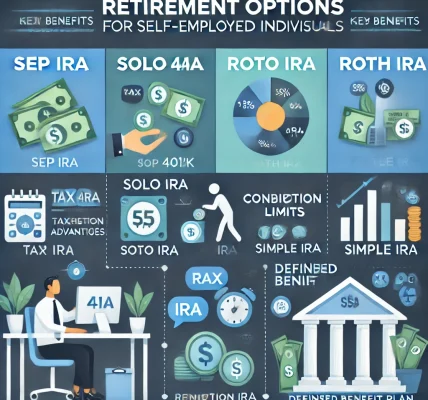Retirement planning is a crucial aspect of financial stability, and one of the most overlooked yet critical factors is inflation. Inflation gradually erodes the purchasing power of money, making it essential to plan ahead so that your retirement savings can maintain their value over time. Without proper planning, you could find yourself struggling to afford basic necessities in your golden years.
This article will help you understand the impact of inflation on retirement planning and provide strategies to ensure a comfortable and secure future, even as the cost of living rises.
What is Inflation?
Inflation refers to the rate at which the general level of prices for goods and services rises, effectively reducing the purchasing power of money. It means that the same amount of money buys fewer goods and services over time. For retirees, this can pose a serious challenge, as their income may not increase at the same rate as inflation, leading to financial difficulties.
How Inflation Affects Retirement Savings
- Decreased Purchasing Power: As inflation rises, the value of money decreases, meaning your retirement savings may not be enough to cover future expenses.
- Longer Life Expectancy: With increasing life expectancy, retirees need to stretch their savings over a longer period, making inflation a crucial factor to consider.
- Rising Healthcare Costs: As people age, medical expenses typically increase. Inflation further exacerbates these costs, making it important to plan for future healthcare expenses.
- Fixed Incomes May Not Keep Up: Those who rely on pensions or fixed annuities may struggle to maintain their standard of living if their income does not keep pace with inflation.
Strategies to Combat Inflation in Retirement Planning
1. Start Saving Early
One of the best ways to combat inflation is to start saving for retirement as early as possible. The power of compounding allows your investments to grow exponentially over time. The earlier you start, the more time your savings have to grow and counteract the impact of inflation.
2. Invest in Inflation-Protected Assets
Certain investments are designed to keep up with or outpace inflation. Consider these options:
- Stocks: Historically, the stock market has provided higher returns compared to inflation. While stocks can be volatile in the short term, they tend to offer growth over the long run.
- Treasury Inflation-Protected Securities (TIPS): These government bonds are specifically designed to protect your savings from inflation. The principal and interest payments adjust with inflation, helping to maintain purchasing power.
- Real Estate: Real estate investments, such as rental properties or Real Estate Investment Trusts (REITs), often appreciate over time and can serve as a hedge against inflation.
- Commodities and Gold: Investing in gold, silver, or other commodities can provide protection against inflation, as their value often rises along with prices.
3. Diversify Your Investment Portfolio
Relying solely on one type of investment can be risky in the long run. Diversifying your investments across multiple asset classes, such as stocks, bonds, mutual funds, and real estate, can help mitigate risks and provide stability to your retirement corpus.
4. Take Advantage of Tax-Advantaged Retirement Accounts
Government-backed retirement plans such as 401(k), IRA, or Roth IRA allow you to invest pre-tax income, reducing your taxable income today while ensuring tax benefits in retirement. Utilizing these options effectively can help you maximize your savings potential.
5. Invest in Dividend Stocks
Dividend-paying stocks provide a steady income stream that can increase over time, helping to counteract inflation. Companies that have a history of increasing dividends may be a good addition to a retirement portfolio.
6. Consider Annuities for Guaranteed Income
Annuities can provide a steady income stream in retirement, protecting you from outliving your savings. Certain annuities, such as inflation-indexed annuities, adjust payouts based on inflation rates, ensuring your purchasing power remains intact.
7. Delay Social Security Benefits If Possible
In the U.S., delaying Social Security benefits past your early retirement age can result in a higher monthly payout. This can serve as a hedge against inflation as your cost of living increases over time.
8. Continue Earning Passive Income
Developing multiple income streams, such as rental income, dividends, royalties, or side businesses, can provide financial stability. Passive income allows retirees to supplement their retirement savings and maintain their lifestyle without relying solely on their retirement accounts.
9. Manage Expenses Wisely
Reducing unnecessary expenses and budgeting effectively can make your retirement funds last longer. Cutting down on discretionary expenses, such as frequent dining out or luxury purchases, can help counterbalance the effects of inflation.
10. Regularly Review and Adjust Your Plan
Inflation rates fluctuate over time, making it essential to review your retirement plan periodically. Adjust your savings rate, investment strategies, and spending habits accordingly to stay on track with your goals.
Conclusion
Planning for early retirement requires a strategic approach to combat inflation and ensure financial security. By investing in inflation-protected assets, diversifying your portfolio, leveraging tax-advantaged accounts, and exploring multiple income streams, you can stay ahead of rising costs and achieve your dream of retiring comfortably before 50.
Would you like an image to go with this blog? Let me know if you need any refinements!




